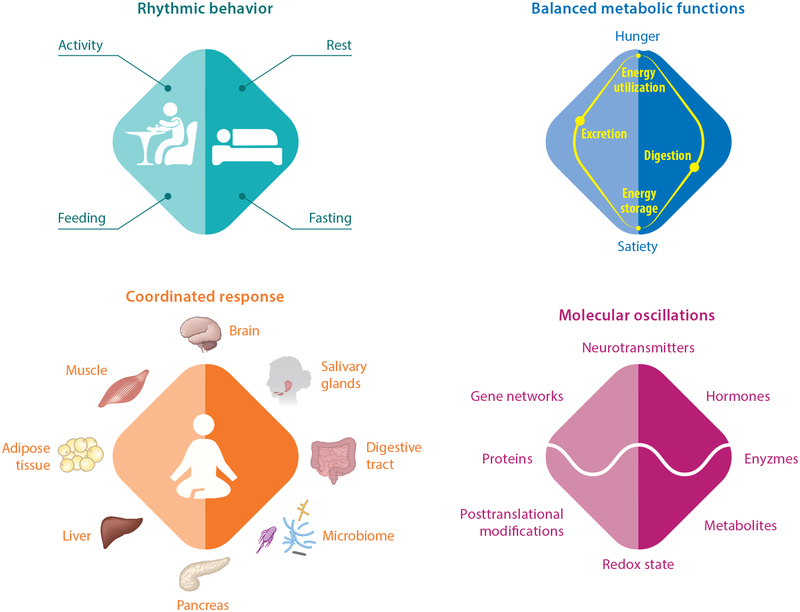Figure 1.
The extensive roles of the circadian clock in regulating nutritional and energetic balance, from behavior to molecules. The master clock controls daily rhythms in activity–rest and associated feeding–fasting behaviors. Accordingly, metabolic functions oscillate between nutrient digestion and energy storage during satiety and between nutrient excretion and energy mobilization during hunger. This nutritional and energetic equilibrium engages multiple organs to ensure balanced digestion and excretion (for example, the salivary glands, pancreas, digestive tract, microbiome, liver) and balanced energy storage and utilization (for example, the liver, muscle, adipose tissue). The secretion of digestive enzymes and hormones, as well as gut peristalsis also vary during the day. At the molecular level, metabolic rhythms are associated with daily oscillations in the activity of gene networks, protein expression, posttranslational modifications, the level of metabolites, and redox state. The master clock and peripheral clocks play critical roles in the daily temporal coordination of these processes.

